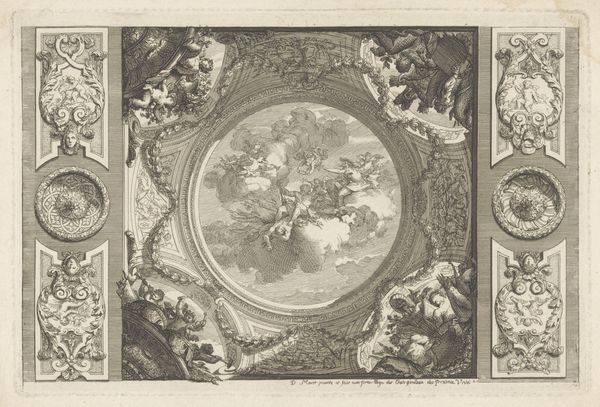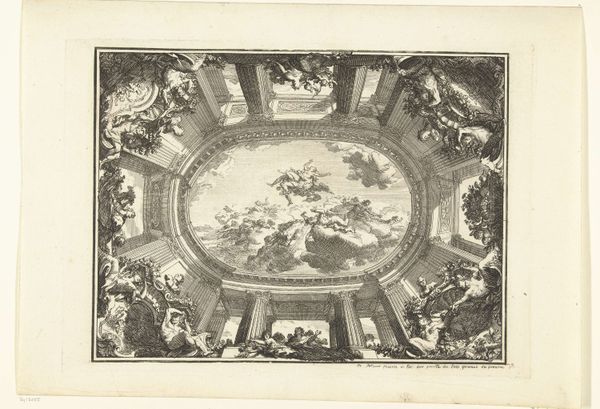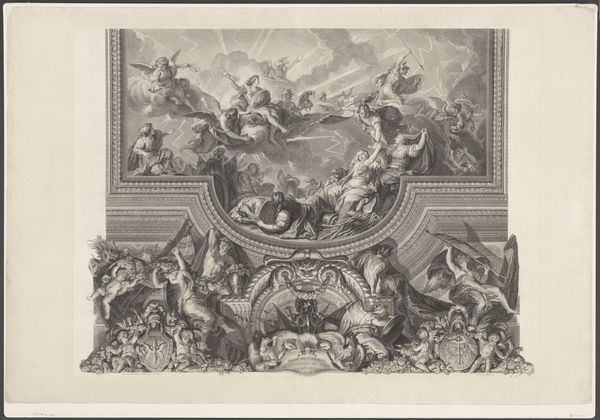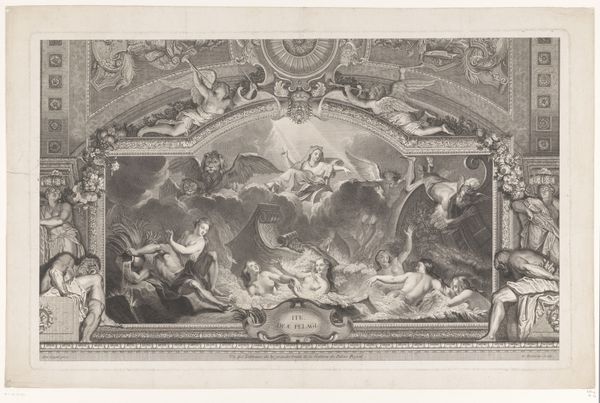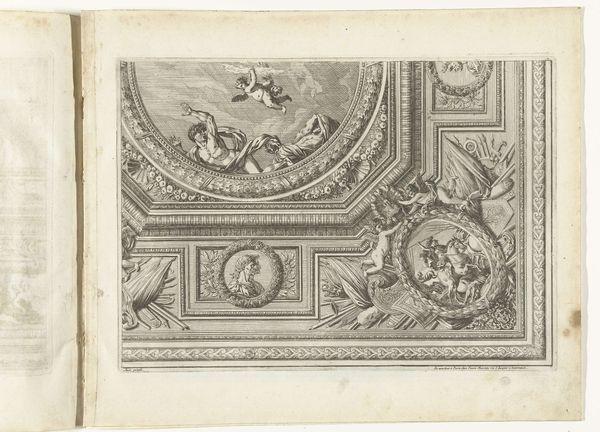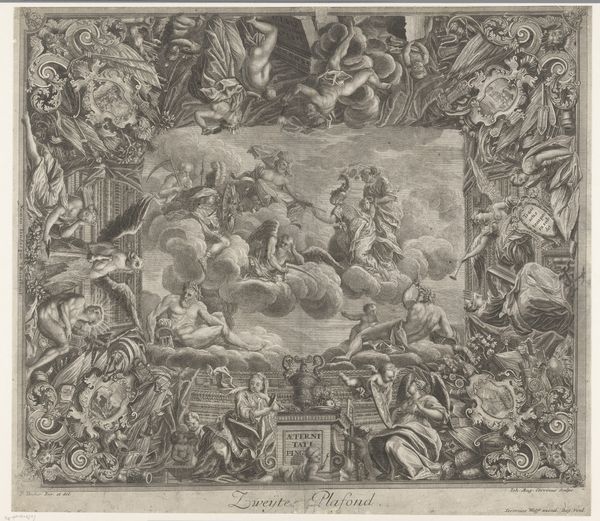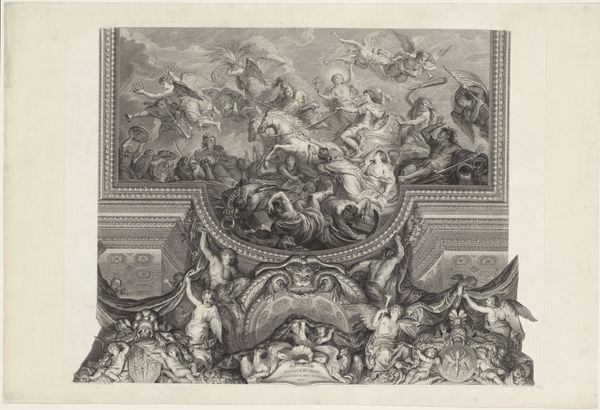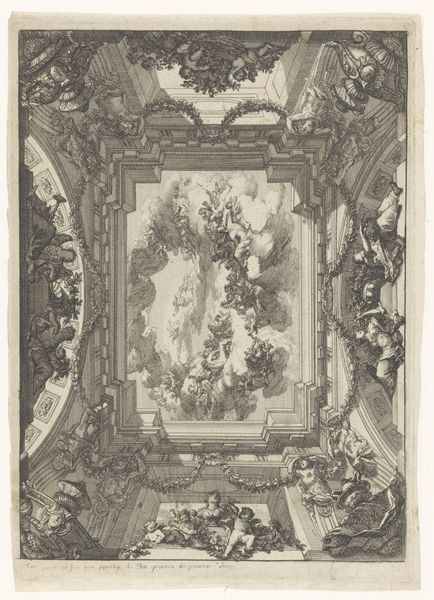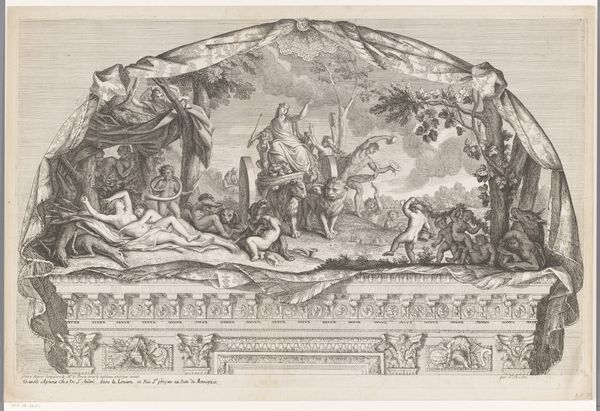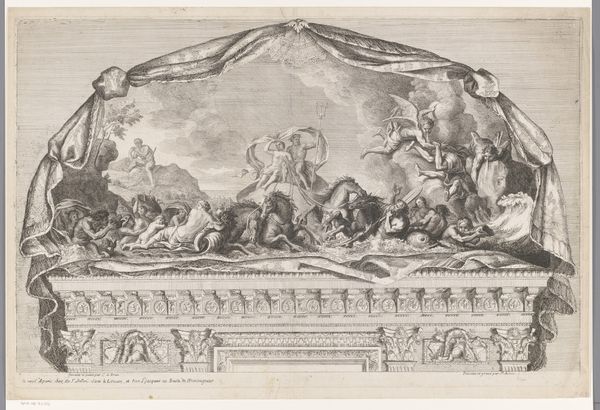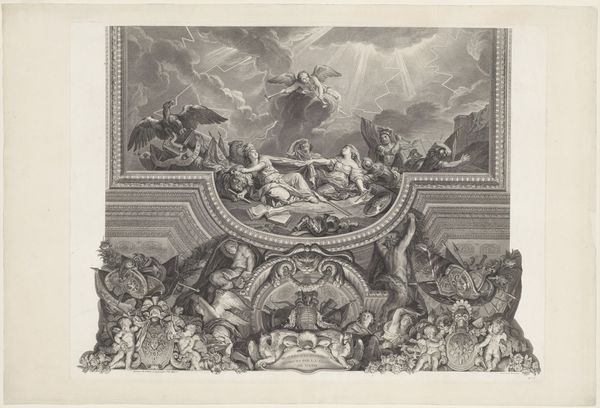
fresco, engraving
#
allegory
#
baroque
#
classical-realism
#
fresco
#
cityscape
#
history-painting
#
trompe-l'oeil
#
engraving
Dimensions: height 194 mm, width 269 mm
Copyright: Rijks Museum: Open Domain
Curator: The detail in this piece is stunning! It immediately pulls you in. Editor: Yes, the illusory effects are quite compelling. This is "Trompe-l'oeil plafond met mythologische voorstelling," a print by Daniël Marot dating back to 1712, currently held in the Rijksmuseum. It simulates a ceiling fresco using engraving. Curator: Engraving trying to mimic fresco… interesting. You can almost feel the weight of the architecture bearing down while figures ascend to the heavens, all rendered with remarkable precision using what would be fairly basic technology by modern standards. What do we know about its production? Editor: Marot was a significant figure in the introduction of French Baroque style to the Netherlands. Considering the context of absolutist monarchies at this time, this imagery and use of allegory functioned as a specific language meant to glorify power, status, and specific histories through recognizable motifs and visual tropes. Think about how that messaging might have been internalized, challenged, or rejected by diverse audiences. Curator: So it's not just about mimicking grand ceilings but also evoking that sense of authority, and potentially, aspiration within the viewer, all done with printed ink on paper. The materiality, of course, doesn’t really approximate the grandeur it signifies – talk about a disjunction between process and meaning! I see the classical realism with allegorical elements here too...a standard language for power. Editor: Precisely! Its public role goes beyond decoration; it's a statement—a promotion of classical ideals during a pivotal period. But how effective was this language of power in print form? Did it democratize access to aristocratic imagery or simply replicate hierarchies in a new medium? That’s what I wonder. Curator: Good questions, especially considering how this type of print potentially put luxury on display for consumption to new, broader audiences. The Baroque's impact, viewed through process and circulation, certainly alters our sense of it. Editor: It forces you to really reconsider art's function then as both cultural object and ideological tool. Curator: A powerful demonstration of illusion and intent, wouldn't you say? Editor: Absolutely, it is! Now I'm looking at it in a totally new way.
Comments
No comments
Be the first to comment and join the conversation on the ultimate creative platform.

